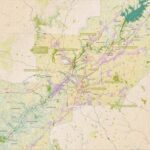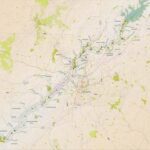Transit Connectivity & Access

The Greenway Study must identify how people get to the River corridor using public and private transportation as well as expand the number and density of access points to equitably serve the region.
Providing direct and comfortable connections to transit stops and stations would enable a substantial proportion of the Metro Atlanta population to reach the River without needing a personal vehicle. Currently, many local transit routes get riders close to the River but not to it. Bus and rail service is more feasible within Sub-Area 2 and portions of Sub-Area 1 but is largely absent south of I-20 and in suburban counties with limited bus service. The location of new river access points can be aligned to existing transit stops and new stops can be placed to align with river access points. More direct and comfortable connections can be made between MARTA rail stations and locations along the River. An example is the Proctor Creek Greenway that will eventually extend between Bankhead station and the River making what is now a five-mile ride along busy roads a safer and more pleasant experience.
Accessing the greenway by personal transportation – either bicycle, foot, or automobile – is critical to linking the region to the River. The Greenway study should link to key regional trail initiatives that prioritize bicycle and pedestrian connectivity, such as the Atlanta Beltline, Proctor Creek Trail, Roswell Riverwalk Trail, Big Creek Greenway, the Mountain to River Trail, and Silver Comet Trail.
Crossing the River today can be difficult with no pedestrian bridges and few roadway bridges that prioritize the experience of the pedestrian. The Greenway Study should consider crossing locations for pedestrian and bicycle bridges within the areas of the River that lack bridge crossings. Current highway bridge crossings are one of the few places where the Chattahoochee is routinely visible to the public, and are mostly concentrated in the northern reaches of the study area. These high-visibility points of crossing offer significant opportunities to improve access to the study area and should be reconsidered as spaces for human access.

/-84.357118,33.945014,12/300x186@2x?access_token=pk.eyJ1IjoibHpjYW11dGkiLCJhIjoiY2o3a281dWJvMHE4ajMzbGF4enJyNHRiciJ9.DhYjvPk5E_wJvys5DU5v2A)



